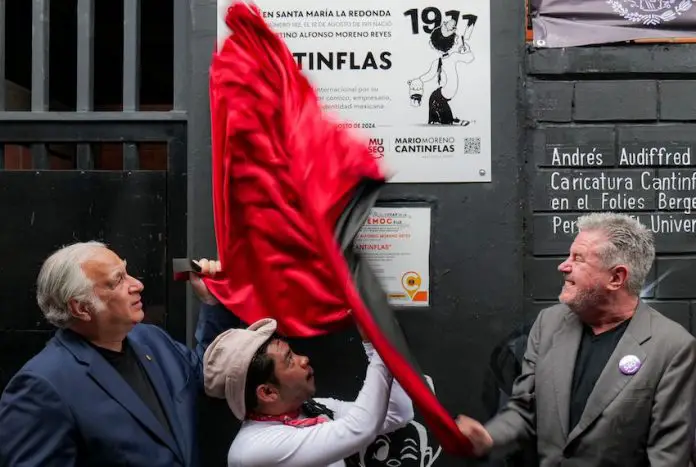A museum dedicated to treasured Mexican comedic actor Cantinflas will open later this year in the Roma neighborhood of Mexico City, officials said Tuesday at the unveiling of a Cantinflas mural in another part of the capital.
The museum, which officials said will fully open by the end of the year, will pay homage to Cantinflas’ legacy in Mexican cinematic and cultural history. Currently referred to as the Mario Moreno Cantinflas Museum, it will include exhibition areas, modern technology, a cafeteria and a souvenir shop.

The museum dedicated to the Mexican film legend will be housed in a facility to be called “La Carpa Valentina,” in tribute to a popular vaudeville theater (which were called carpas, or tents) in Mexico City where a young Cantinflas honed his comedic skills before gaining wider recognition.
Mario Fortino Alfonso Moreno Reyes — known simply as Mario Moreno before his “Cantinflas” moniker took hold — was born 113 years ago this week, on Aug. 12, 1911. He died in 1993 at age 81.
The colorful, new Cantinflas mural unveiled Tuesday is located in the capital’s Guerrero neighborhood, at 182 Eje Central Lázaro Cárdenas, the building where the Mexican icon grew up. The mural was painted by the prominent Mexican street artist known as “Yuka,” whose works also appear in Germany, Italy, Japan and Argentina. The site of the new mural also includes a Cantinflas plaque, which was affixed in 2013 to pay tribute to the actor’s birthplace.
Officials said the museum will initially open in late September and will display 777 pieces related to Cantinflas, such as clothes, scripts, letters, articles and film clips. That number was chosen in deference to the famous Cantinflas film “El patrullero 777,” or “Patrolman 777.”
Sporting a distinctive, whimsical mustache that was part of the Mexican actor’s overall comic persona, Cantinflas had a film career that spanned from his heyday in the 1940s and 1950s up through the early 1980s. Sometimes he is referred to as “the Mexican Charlie Chaplin.”
He mostly portrayed hapless but well-intentioned characters, such as a patrolman who wants to keep order but finds himself in increasingly absurd (and funny) situations. His best films are known for their witty dialogue, physical comedy and social commentary.
A clip of Mexican actor Cantinflas in his final role, in 1982’s “El Barrendero” (The Sweeper).
The mural unveiled on Tuesday by the Tourism Ministry shows Cantinflas as four of his most famous characters: the aforementioned patrolman, the affable but perplexed Chato from “Ahí está el detalle” (“It’s All in the Details”), the rapid-speaking but nonsensical Professor Pancito López in “El profe,” and a lovable but woebegone street sweeper in “El barrendero.”
Released in 1982, “El barrendero” (“The Sweeper”) was the actor’s final film, and it includes an iconic scene in which the actor sings and dances at his job.
The legendary Mexican actor received perhaps an even bigger honor in 1992, when the Royal Spanish Academy added to its dictionary the verb cantinflear, alluding to someone who expresses himself by talking a lot but saying nothing — as Cantinflas regularly did in his movies.
Another honor will occur later this month, when a national lottery ticket dedicated to Cantinflas will be issued for the Aug. 25 drawing.
With reports from La Prensa, Aristegui Noticias and Forbes
